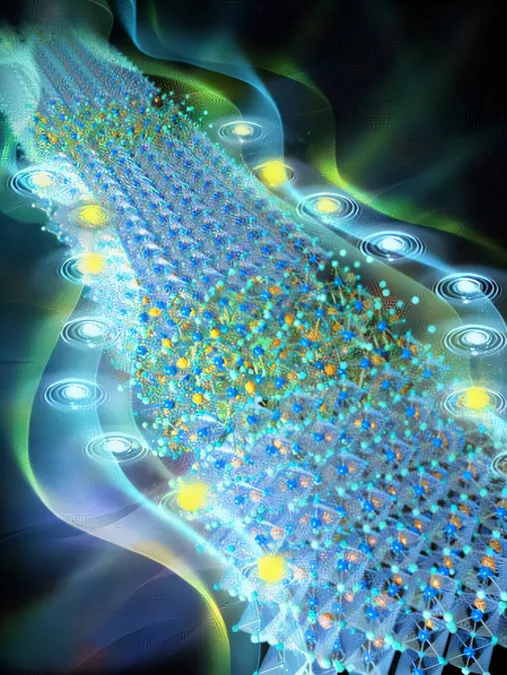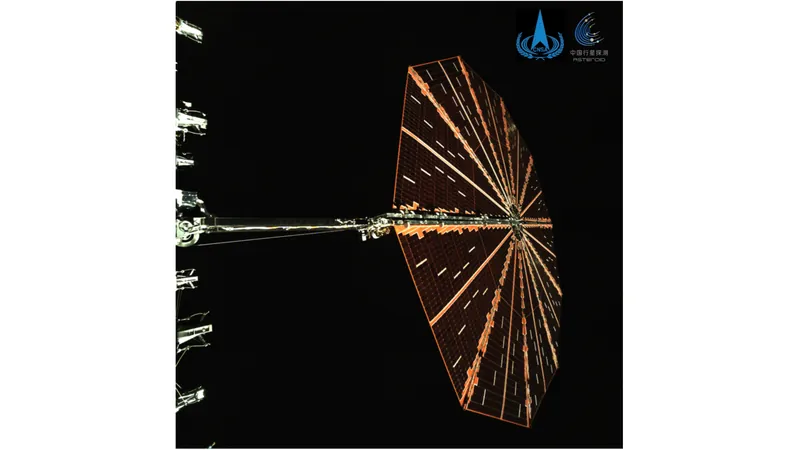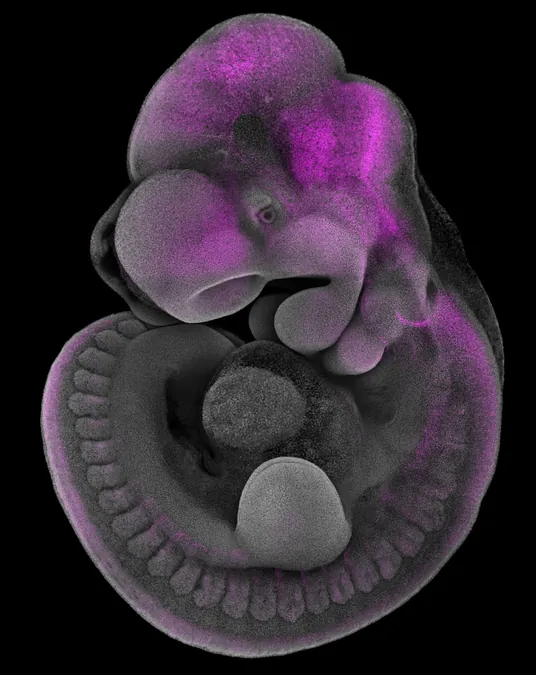
Breakthrough in Red Perovskite LEDs: A Game Changer for Bright Displays!
2025-05-09
Author: Rajesh
Unveiling a Revolutionary Material Design
A groundbreaking achievement has emerged from the University of Science and Technology of China (USTC) as researchers tackle a long-standing challenge in the field of pure-red perovskite light-emitting diodes (PeLEDs). Their innovative study, recently published in *Nature*, unveils a unique material design that dramatically boosts efficiency and brightness in these essential components for high-quality displays.
Record-Breaking Efficiency and Brightness
The new approach has led to astonishing results: a peak external quantum efficiency (EQE) of 24.2% and a maximum luminance of 24,600 cd m-2—setting a new record for pure-red PeLEDs. This is a crucial development for applications in vibrant displays and effective lighting solutions.
Solving the Efficiency Mystery
For years, the performance of pure-red PeLEDs has been hindered by a dilemma between efficiency and brightness. While 3D mixed-halide perovskites, such as CsPbI3-xBrx, excel in charge transport, they experience significant efficiency drops at high current due to undetected carrier leakage.
Innovative Diagnostic Tool Paves the Way
Under the leadership of Professors Yao Hongbin, Fan Fengjia, Lin Yue, and Hu Wei, the research team employed an advanced diagnostic tool—electrically excited transient absorption (EETA) spectroscopy. This innovative technique allowed them to observe real-time carrier dynamics in active devices, pinpointing hole leakage into the electron transport layer as the main factor causing efficiency roll-off.
Engineering a Solution
To combat this issue, the researchers ingeniously engineered a 3D intragrain heterostructure within the perovskite emitter. This design integrates narrow-bandgap light-emitting regions within a robust [PbX6]4- framework, utilizing wide-bandgap barriers to effectively confine the carriers.
The Role of PTLA
A key player in their strategy is p-Toluenesulfonyl-L-arginine (PTLA), a molecule that strongly bonds to the perovskite lattice through its functional groups. This bonding not only expanded the lattice structure locally but also formed wide-bandgap phases without compromising the overall structural integrity.
Remarkable Performance Metrics
The optimized PeLEDs demonstrated extraordinary performance, achieving an EQE of 10.5% at a brightness close to 22,670 cd m-2—nearly 90% of the peak brightness. Stability tests further confirmed their durability, showing a half-lifetime of 127 hours at 100 cd m-2 with minimal spectral shift during operation.
A Future Full of Possibilities
This innovative development marks a significant leap forward in the quest for high-performance lighting and display technologies. With the ability to confine holes while ensuring high carrier mobility, the future of pure-red PeLEDs looks incredibly promising, potentially transforming how we view displays in various applications!



 Brasil (PT)
Brasil (PT)
 Canada (EN)
Canada (EN)
 Chile (ES)
Chile (ES)
 Česko (CS)
Česko (CS)
 대한민국 (KO)
대한민국 (KO)
 España (ES)
España (ES)
 France (FR)
France (FR)
 Hong Kong (EN)
Hong Kong (EN)
 Italia (IT)
Italia (IT)
 日本 (JA)
日本 (JA)
 Magyarország (HU)
Magyarország (HU)
 Norge (NO)
Norge (NO)
 Polska (PL)
Polska (PL)
 Schweiz (DE)
Schweiz (DE)
 Singapore (EN)
Singapore (EN)
 Sverige (SV)
Sverige (SV)
 Suomi (FI)
Suomi (FI)
 Türkiye (TR)
Türkiye (TR)
 الإمارات العربية المتحدة (AR)
الإمارات العربية المتحدة (AR)